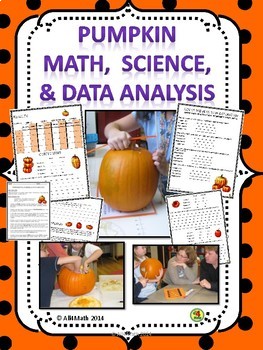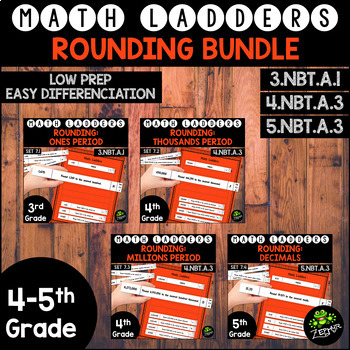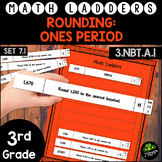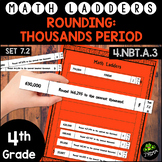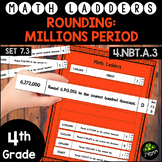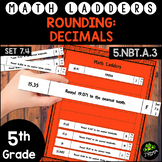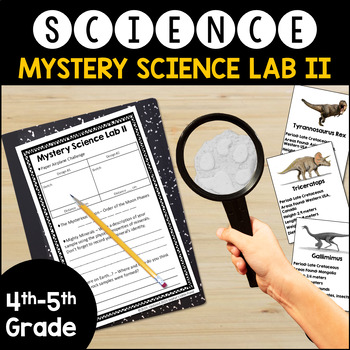If there's one thing I hate, it's test prep. But, if we have to do it, then I want to ENJOY it. And this method is pretty much stress free (after the first year) and my kids are begging for test prep days.
The premise of my classroom is simple: I've grouped my students using their last math data scores. Each group is given a tribe name and works together to earn points for their tribe through our Reward Challenges and Immunity Challenges. At the end of the class period, we hold a Tribal Council and one team is "voted off the island." (No one is actually kicked out of class - that would defeat the purpose of test prep!) The tribe with the most points at the end wins the prizes I've accumulated (stickers, fun erasers, coupons to restaurants, random toys, etc....all kept nice in a beach bucket from Dollar Tree).
Grouping Students: I'm extremely intentional about exactly who my students sit with. I rank my kids from highest to lowest (using more than one set of data). Then, since I have 5 table groups, I label the top five as High, the second five as High-Medium, then Low-Medium, then Low. If I have extras, I make my High-Medium group bigger. (These are the kids that need extra practice or they're going to fall in their test scores or the ones that are just "so close!")
Then I put together groups of High, High-Medium, Low-Medium, and Low so that the High and Low-Medium are sitting together and the High-Medium and Low are sitting together. I put the High student across from the High-Medium student so that the High-Medium can "overhear" how High explains things and use that to model how he/she explains things.
If I have to have 5 in a group, I put the extra High-Medium on the end by the High & High-Medium. This also keeps my lower students in the front for when I'm teaching.
High
|
High-Medium
|
Low-Medium
|
Low
|
So, what does a day look like? I start each day with a Cram at Camp because it's group work and I can take care of whatever else needs my attention at the start of class. The kids are anxious to get into their Cram session because the more they study the better they do (and the reluctant learners are dragged in by the competitive ones!) We end with Tribal Council because...well....it's Tribal Council! Everything else can be mixed up in whatever way works. Sometimes, I don't do both Reward & Immunity Challenges in the same day (if we don't do Immunity Challenges, then no Tribal Council.)

- Cram at Camp (10-15 minute sessions) - Students work within their groups to complete a packet of test questions. I simply print a booklet of questions out for each group and they work through them as a tribe. I stress to the kids that it's not about completing the entire book. It's about making sure that everyone in the group understands the problems they get through. I have the kids do a cram session as soon as they walk in (gets them settled in faster) and another one later in the day. They're doing 30 minutes of cramming, but breaking it up helps keep them focused. (I really like this Test Prep Series. Days 1-50/Days 51-100)
- Zip Line Adventure (10 minutes) - A quick mini-lesson taught by the teacher. I do one a day and have all the skills mapped out before I start the unit based on what my kids need to review according to their data.
- Reward Challenge - Game time! We play a game (see the games section below) as a class.
- I have one person from each group come to the front table where I have white boards ready. Each person on the tribe is assigned a number. All the 1s have the same ability, all the 2s are the same ability, etc so that my High students aren't competing against the Low students. If I have extras, my High-Mediums are in two groups. If I don't have enough for 5 in each tribe, the groups with 4 will have one student that comes up twice. I assign that spot to a student that really needs some extra practice.
- I show the question on the doc cam, they solve it, first person to answer correctly gets the points. If they answer wrong, they have to go back to their seats. Some questions are multiple choice or multi-select (the format of our state test), so I do this to discourage randomly guessing. To make the questions, I cut apart an old math book, pasted the word problems on index cards with the answers on the back.
- At each table, the other kids have white boards and are solving the questions at the same time. If anyone is not working, I make a note and take points from the tribe. When they get done, they hold up their white boards and I give them quick feedback to let them know if they're right or wrong. If wrong, they try again.
- Once we've got a winner, everyone is out, or they're just wasting too much time, we go over the question as a class.
- At the end of the game, I record their points and put a count on the board of how many points each tribe has. (See the picture above.) The team with the most points gets 5 points on their totem pole. (I have 5 groups). The second place team gets 4, etc. If I have a tie, they tie for the highest point value.
- Note: If someone is absent, their group has no one to compete for that round. This helps with attendance, but also keeps groups from always sending in the High kid as a substitute.
- Tree Mail - I try to give the kids a quick idea of what the Immunity Challenge might focus on (NBT, NF, OA, MD, or G). This helps ensure that they're working through all different types of problems in their Cram at Camp sessions and not hanging out at the front of the booklet where the NBT questions are.
- Jungle Trek - I've got to get some grades during test prep time, so I call our graded assignment time Jungle Trek. I'll give one assignment that should take no more than 10-15 minutes and when they're done they can go back to Cram at Camp.
- Immunity Challenge - Game time again! The only difference is that at the end of this game the points are recorded on the board as [total points for the game] + [#of points for today's immunity challenge]. See the picture above. The group that wins immunity gets 5 points (circled in the above picture) and can't be voted for. I hang the funny tiki guy over their table (our Immunity Idol) and then we get ready for Tribal Council.
- Tribal Council (10 minutes) - It's a wasted 10 minutes...I'll be honest. But, I'll gladly give up 10 minutes per day to keep everyone focused & engaged for the rest of the class period. I tear up a sheet of 12x18 construction paper into 5 slips and give each tribe a slip. As a tribe, they choose which tribe will lose all points from today's immunity challenge. Alliances form, alliances are broken. Drama ensues. It's great!!!! I tell the kids that what happens in the game, stays in the classroom. Breaking alliances is part of it. So, we show our votes, do a final tally for the day, and I send them to their next class.
Games - I try to keep the games something easy for me to set up. I only get (on paper) 10 minutes each day to prep for my classes, so I really don't want to spend hours prepping a game.

- Jeopardy - I have a Jeopardy pocket chart that I slide cards into. Ahead of time, I had to assign point values and categories (NBT, NF, OA, MD, and G seemed like good categories) that I wrote on the back of the cards. Now, to set up Jeopardy, I grab the Ziplock labeled Jeopardy and pull out random cards. As we use the cards, I put them aside. For the next game, I add in cards only to the pockets needing to be replaced. (Or, if they solve all the questions for NBT 100 points, I leave that pocket empty.)
- Turtle Egg Hunt - I bought these pool toys for my son when he was little and decided that opening a turtle egg to see how many points you earned was an easy game. You could always use Easter Eggs too.
- Wibble Wobble Island (Pictured at Right) - I took an old Twister Mat and labeled each circle with a point value. For fun, I added some shark infested waters with negative points. :) They have to roll an Easter Egg (that has a marble inside of it) and get it to land on an island (any island - color doesn't matter). Those Easter Eggs go all over the place! If they roll off the map, negative or no points.
- Build the Highest Tower - I found an old Bandu game at Goodwill. (Any building blocks can work.) I put pieces under coconut halves (bought those at Dollar Tree) and the winner of each round chooses a coconut half and has to use the piece to make their tribe's tower. Tallest tower wins. Second tallest gets 4 pts, etc.
- Beach Bucket Toss - I line up 3-5 beach buckets and assign points to them. (At least 1 has negative points.) Students choose an Easter Egg to represent the tribe they're earning (or losing) points for. For this one, they don't have to choose their own tribe color! So, it's possible for a team to be given negative points from another team.
- Flying Monkey (Pictured Below) - I have a cute stuffed monkey and a mat labeled 1-10. You could just mark off the floor with painter's tape. They toss the monkey and however far he goes is how many points the tribe gets. I usually give negative points if he flies too far in order to discourage crazy throws!
- Stinky Feet - I just found this game online last night and LOVE it. Prep time is minimal.
 Setting Up the Island
Setting Up the Island - My first year of doing this, I had a few inflatable palm trees that I paid top dollar for from our local party store. Then, at the end of our school year (May/June), I found that Dollar Tree had brought out all their summer party gear. I picked up tons of inflatable palm trees, monkeys, and parrots. I got the coconut shells (they're supposed to be for drinks) and tiki totem paper cut outs (that I hang over their desks). One thing I also picked up right away was the
Survivor Soundtrack from Amazon. I love music and having the music in my room (even without tons of decor) brought the Survivor Island feel to the classroom.
Get the Files - My Google Drive - I've posted my version of the Survivor Logo, Tribe Signs, and Tiki Totem Poles for tracking points on my Google Drive. Feel free to download them and use them to survive your own test prep.
 It's that time of the year!!!! Christmas!!! Easily, my all-time favorite holiday and I love sharing fun things to do with the classes. But, with all the stress of it being report card time and trying to make magic happen for my own family, the classroom is one more stress factor that many women don't need. Over the years, my team has perfected the "Easy Classroom Christmas Party."
It's that time of the year!!!! Christmas!!! Easily, my all-time favorite holiday and I love sharing fun things to do with the classes. But, with all the stress of it being report card time and trying to make magic happen for my own family, the classroom is one more stress factor that many women don't need. Over the years, my team has perfected the "Easy Classroom Christmas Party." Lunch Until End of the Day: In the classroom with a movie. Polar Express is always a favorite movie, but my kids have seen it a million times (every year in elementary school), so they get bored quickly. For that reason, I'll show A Christmas Carol. It's rated PG, which means I have to get parent permission, but it's really good and one the kids haven't really seen. If we still have time, I break out the old Christmas TV specials: Rudolph, Frosty, Santa Claus is Coming to Town, etc. This is when I get out the hot chocolate that was in their Christmas stockings.
Lunch Until End of the Day: In the classroom with a movie. Polar Express is always a favorite movie, but my kids have seen it a million times (every year in elementary school), so they get bored quickly. For that reason, I'll show A Christmas Carol. It's rated PG, which means I have to get parent permission, but it's really good and one the kids haven't really seen. If we still have time, I break out the old Christmas TV specials: Rudolph, Frosty, Santa Claus is Coming to Town, etc. This is when I get out the hot chocolate that was in their Christmas stockings. Gingerbread Houses Materials List
Gingerbread Houses Materials List


